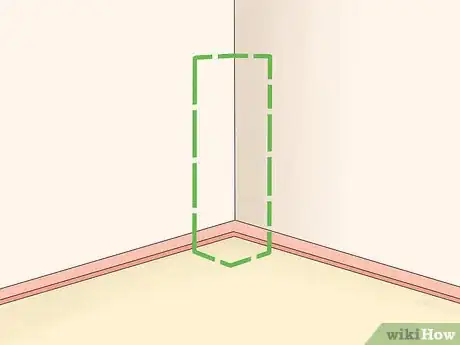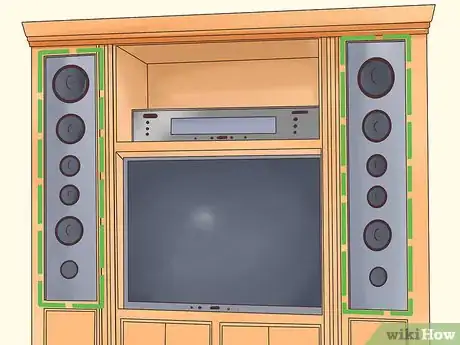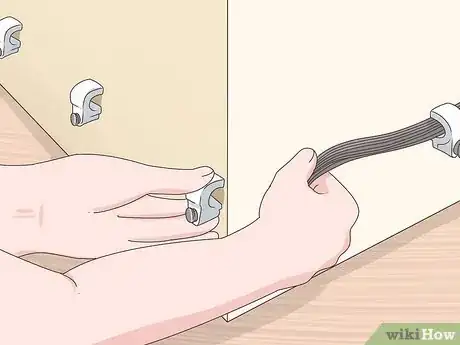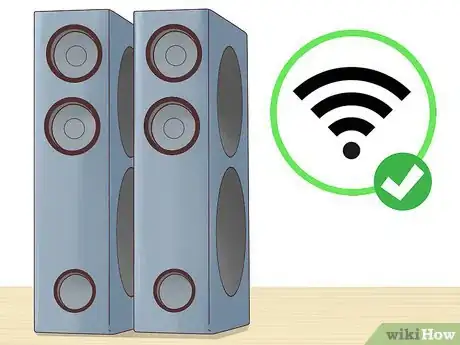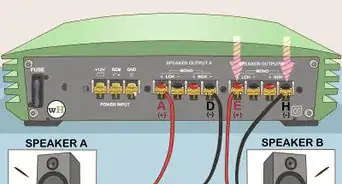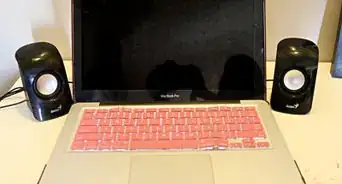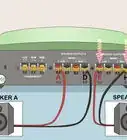This article was co-authored by wikiHow staff writer, Amy Bobinger. Amy Bobinger has been a writer and editor at wikiHow since 2017. She especially enjoys writing articles that help people overcome interpersonal hurdles but frequently covers a variety of subjects, including health and wellness, spirituality, gardening, and more. Amy graduated with a B.A. in English Lit from Mississippi College in 2011 and now lives in her hometown with her husband and two young sons.
This article has been viewed 21,259 times.
Learn more...
Floorstanding speakers are a great way to get high-quality sound out of your stereo system. They’re most effective when they’re used at the front of a room, but they don’t always fit in with your interior design. Luckily, there are a few ways to disguise both your speakers and their wiring.
Steps
Disguising Floor Speakers
-
1Find a location for your speakers that is out of the line of sight. Floorstanding speakers are designed to be placed near the front of a room, but if you want to disguise them, try moving them towards the corners of the room instead. You might sacrifice a little acoustic quality, but your speakers will be less visible.[1]
-
2Paint or stain your wood speaker box to match your decor. Painting your speaker box won’t hide the speaker fronts, but it can help the speakers look like they belong as part of the room. Keep in mind that heavy paints can change the acoustics of your speaker, so stick to a light stain or use spraypaint.[2]
- If you can, disassemble your speaker before you paint it. Carefully remove the cones, wiring, and other components, then replace them once the paint is completely dry.
Advertisement -
3Hide your speakers in cabinets to make them look like furniture. Placing your floorstanding speakers in large cabinets can completely hide them from sight, but make sure the cabinets have a mesh or lattice-work front so the sound waves will still be able to escape.[3]
-
4Build the speakers into the walls for a seamless look. If you’re handy with carpentry, try installing your speakers into the wall. Locate the best acoustic spot for your speakers, then cut a hole in your wall where you want the speaker to go. Place the speaker in the hole so it’s slightly inset and cover the opening with mesh or lattice-work.[4]
-
5Choose a speaker made from a material that blends in with your decor. If you're shopping for new speakers, look for one that will naturally coordinate with your home. For instance, if you have hardwood floors, you could look for a speaker with a case made from the same wood as your flooring.
-
6Buy speakers that are made to look like furniture. Placing a speaker inside of a cabinet will muffle its sound, but if you’re shopping for a new speaker, you can look for options that are built to look like furniture.
Hiding Speaker Wires
-
1Hide cords in plain sight with a conduit channel. A conduit channel might sound like something a professional electrician has to install, but it’s actually just a cover made to disguise electrical cords.
- Conduit channels, also called raceways, can be installed along the floor or down a wall, then painted to blend in perfectly with your color scheme.[5]
-
2Hide long wires along your baseboards and around doors. If you have long wires connecting your speaker system, keep them off the floor by running them along your baseboards and over your door frames. You can attach them by using nail-in cable clips, which you can get at a hardware store.[6]
-
3Run the wires under your flooring or in your wall for an invisible look. To completely camouflage wires, drill a hole in your wall or your floor near your speakers, then drill another one close to your power outlet. Feed the wires into the first hole, then fish the wires through the second hole.[7]
-
4Go wireless to avoid the issue altogether. If you’re buying new floorstanding speakers, you don’t necessarily have to deal with wires at all. There are a number of wireless speakers available on the market, and the models range from basic speakers to high-end acoustics.
References
- ↑ https://www.cnet.com/how-to/how-to-position-your-speakers-perfectly/
- ↑ https://www.bhg.com/decorating/paint/how-tos/spray-paint-tips/
- ↑ https://www.digitaltrends.com/home-theater/10-common-home-theater-mistakes/
- ↑ https://www.cnet.com/how-to/how-to-position-your-speakers-perfectly/
- ↑ https://www.familyhandyman.com/electrical/wiring/how-to-hide-wiring-speaker-and-lowvoltage-wire/view-all/
- ↑ https://www.huffingtonpost.com/entry/pinterest-hacks-for-hiding-unsightly-wires_us_56719d79e4b0648fe301ca2e
- ↑ https://www.familyhandyman.com/electrical/wiring/how-to-hide-wiring-speaker-and-lowvoltage-wire/view-all/
- ↑ https://www.ul.com/wp-content/uploads/2014/04/WC_MG.pdf
About This Article
To disguise your floorstanding speakers, first try to find a place for them is out of sight. If you own your speakers and you want to hide them, paint them to match your decor or place them inside a cabinet. You could also try putting them in your walls and covering them with mesh or lattice-work. If you’re shopping for new speakers, try looking for options that are already built into furniture. If you want to learn how to hide the speaker wires, keep reading the article!
